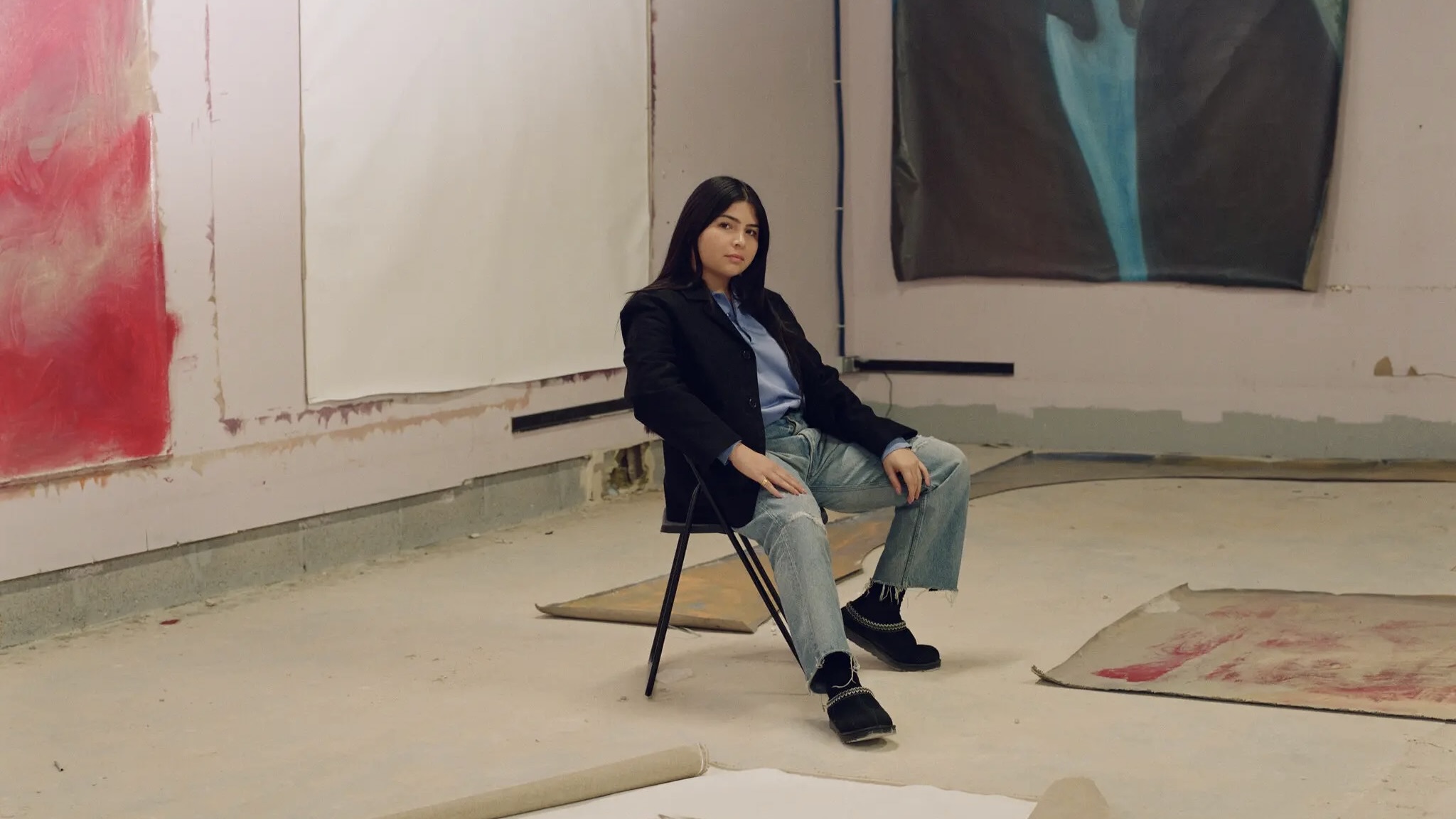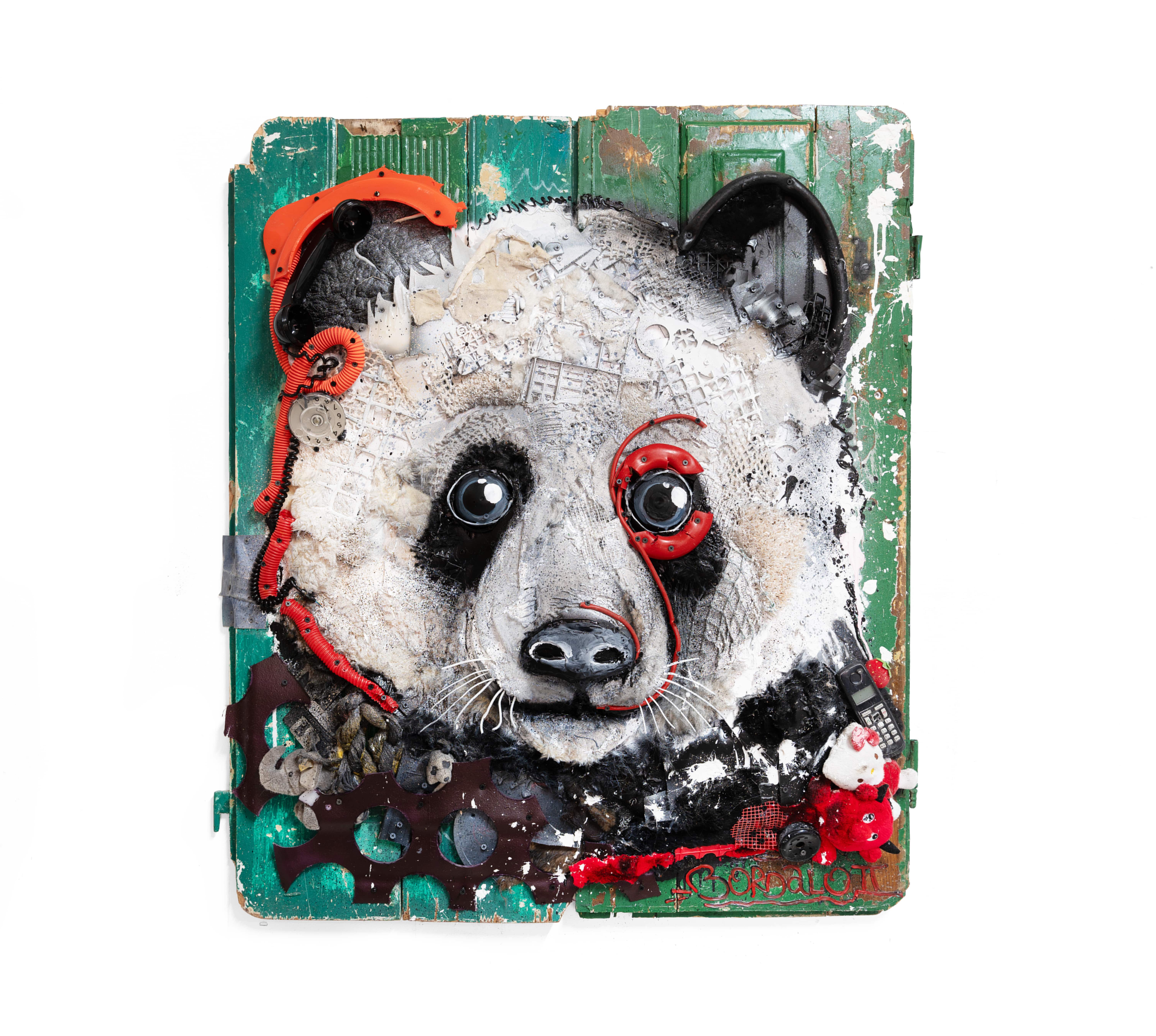
Each of these artists uses found materials as portals into queerness, migration, decay, resilience, and radical beauty. They are not merely recycling materials; they are reauthoring meaning. Their medium is detritus, their language is liberation.
Among the most compelling voices in this global reclamation is Leilah Babirye, the Brooklyn-based sculptor whose work pulses with defiance and dignity. Originally from Kampala, Uganda, Babirye fled persecution for her identity as a queer woman and has since emerged as one of the most vital sculptural forces of her generation. Her practice begins with the discarded: rusted bike chains, burned timber, inner tubes, bicycle parts, industrial scrap. Through deliberate layering and welding, she fashions regal busts and totemic guardians that echo the Buganda royal lineage – a heritage from which LGBTQ+ Ugandans have historically been excluded. Her figures stand tall, proud, and unbending – part monument, part ancestor, part political force.
In Babirye’s hands, trash becomes sovereignty. The detritus of global industry becomes reimagined. Her sculptures are draped in tyres and welded metal as if in ceremonial attire. She reclaims materials the world deems worthless and imbues them with spiritual and cultural value. Tires become crowns; splintered wood becomes skin; scrap metal morphs into bone and structure. Every sculpture is an act of reparation – of giving back visibility and stature to those denied both. These works carry the weight of queer survival, Ugandan heritage, and diasporic futurity – simultaneously grounded and visionary. One such piece is Senga Muzanganda (Auntie Muzanganda) from 2020, a commanding bust adorned with salvaged materials that feel at once sacred and defiant. It speaks of kinship and protection, and of the auntie figure as a custodian of both resistance and lineage. Babirye’s work has been shown at institutions such as the Yorkshire Sculpture Park, Socrates Sculpture Park in New York, the Victoria and Albert Museum, the High Line, and Haus der Kunst in Munich – always pushing against the boundaries of what sculpture, gender, and heritage are allowed to be. She is represented by Stephen Friedman Gallery with locations in London and New York.
In stark contrast yet equal resonance stands Ser Serpas, the young Los Angeles-born artist whose installations unsettle as much as they seduce. Now based between New York and Paris, Serpas sources her materials directly from the margins of urban life – abandoned couches, torn linens, discarded shelving – items with the dust of other people’s lives still clinging to them. But where others might seek polish, Serpas seeks confrontation. Her assemblages feel temporary, precariously perched between construction and collapse. They whisper with the energy of dislocation. Serpas’s work is not interested in permanence – it flirts with entropy. Her 2025 installation at Palais de Tokyo left viewers lingering not only on the unstable physicality of the works, but on the cultural scaffolding they challenge. In using garbage as a tool of self-exploration and a critique of capitalist detritus, she poses urgent questions: What do we keep, what do we cast off, and who gets to decide? Hers is a poetics of refusal: refusing aesthetic nicety, refusing capitalist definitions of value, refusing the tidy narrative arc. Her pieces decay in real time, echoing the societal systems they indict.
Then there is Bordalo II, the Portuguese artist whose monumental trash animals have redefined urban eco-activism. Working at the intersection of graffiti, sculpture, and environmental intervention, he transforms mountains of industrial and household waste – plastic barrels, wires, tires, toys – into startlingly lifelike animals. Whether climbing buildings or confronting passersby in unexpected spaces, his Big Trash Animals series renders endangered species in vivid, almost operatic detail. A towering Iberian lynx in Lisbon, a massive Atlantic goliath grouper in Funchal, and a giant crab in Ericeira are just a few of his most recognisable works, as documented in recent retrospectives on his urban installations.
In Mai 2025, his solo exhibition Irréversible at Galerie Mathgoth, located at 1 Rue Alphonse Boudard in Paris’s 13th arrondissement, took over a raw 300 m² warehouse space. It presented around 40 new relief sculptures created specifically for the occasion. The works – illuminated and politically charged – formed a visual cry against biodiversity loss, overconsumption, and ecological erosion. The show was praised in French cultural press for its immersive, confrontational staging and its ability to turn ecological urgency into visceral, visual experience. One of his more recent sculptures, a Trash Animal – Panda exhibited in Chichester, was constructed from vacuum hoses, old telephones, plastic toys, and tangled cables – each fragment a remnant of modern life, reassembled into a powerful symbol of waste and awakening. As highlighted in Graffitistreet Magazine (2025), the piece functions as both warning and invitation: to look again at what we discard, and what that says about us.

What makes Bordalo II’s work so potent is its ability to straddle spectacle and indictment. His animals dazzle the eye while implicating the viewer. They are mirrors made of garbage, forcing us to confront the ecological violence baked into our convenience culture. For Bordalo II, art is the waste – reassembled into revelation.
Together, Babirye, Serpas, and Bordalo II form a kind of informal constellation. Each artist channeling trash as a form of political inquiry, cultural critique, and radical storytelling. Their works resist the clean lines of traditional galleries and instead invite friction: between beauty and decay, between loss and reclamation, between what we consume and what we conceal. What binds them is not just material, but philosophy. Their practices affirm that waste is not neutral. It is saturated with memory, labor, neglect, and value systems. To create with it is to disrupt those systems from within. To center it is to make visible what modern economies would rather forget.
As we hurtle further into climate crisis, housing collapse, and cultural fracture, turning trash into protest feels less like artistic expression – and more like a necessity. These artists confront us with elegance, brutality, and transformation. Because what we choose to pick up may be where the truest revolution begins.